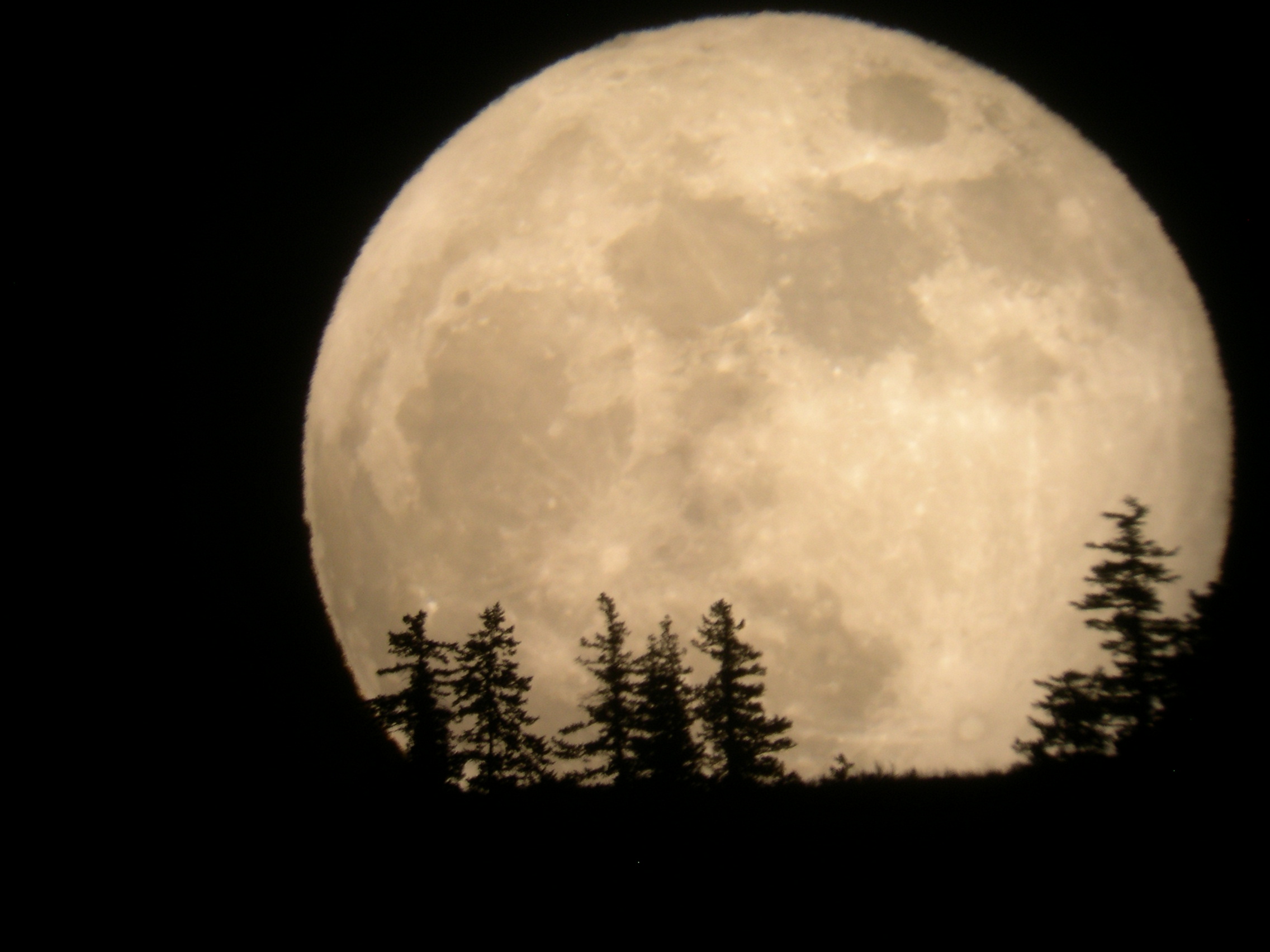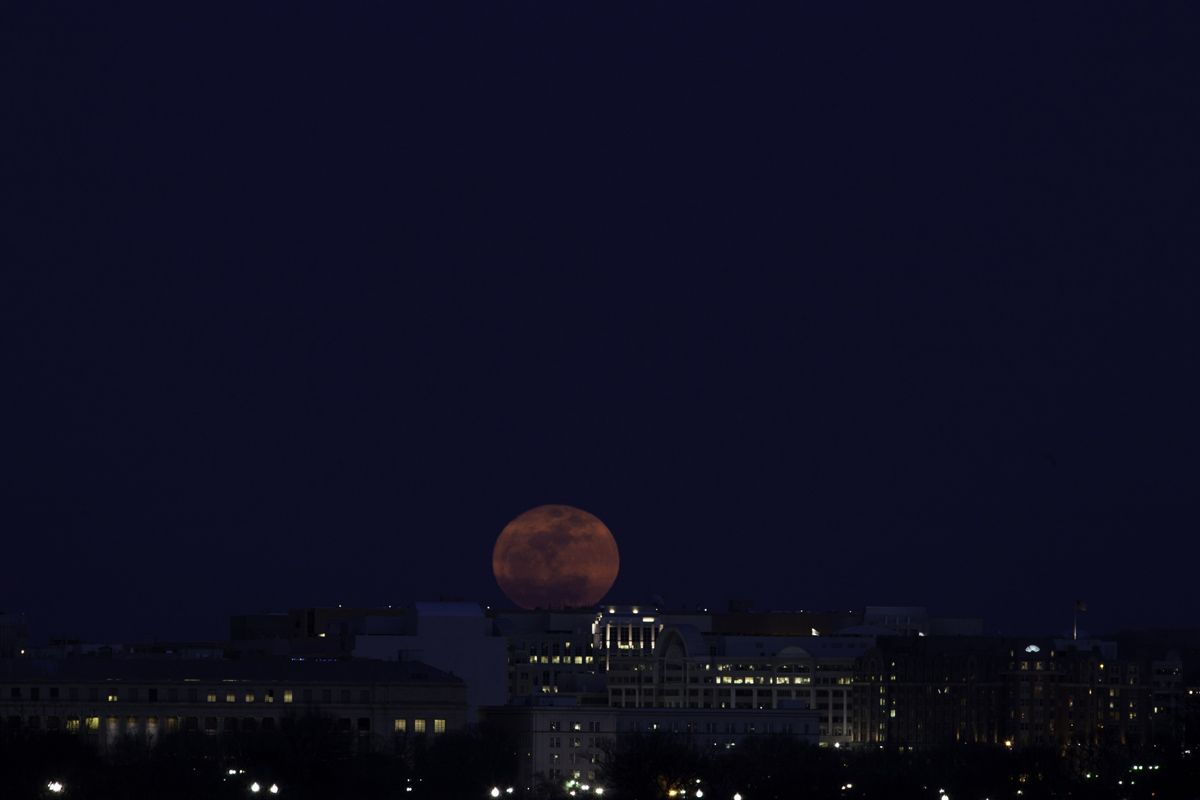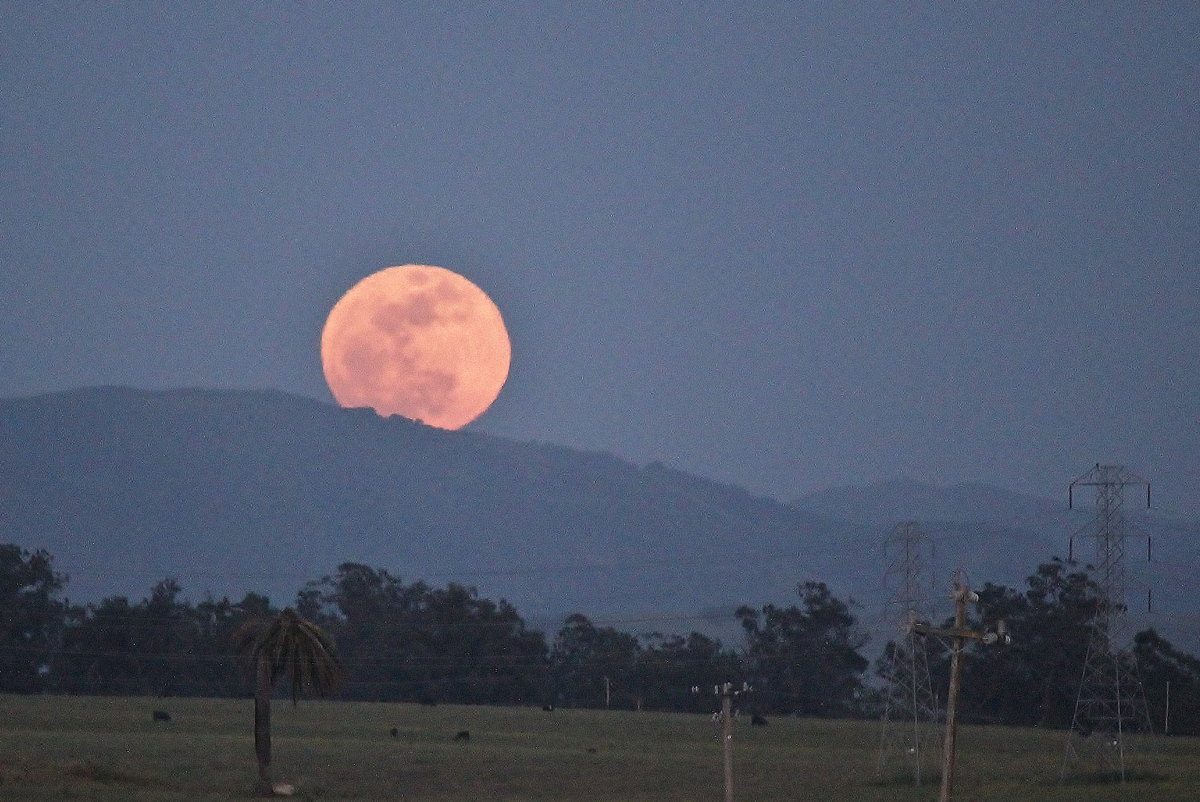
The largest full moon of 2013, a so-called "supermoon," will light up the night sky this weekend, but there's more to this lunar delight than meets the eye.
On Sunday, June 23, at 7 a.m. EDT (1100 GMT), the moon will arrive at perigee — the point in its orbit its orbit bringing it closest to Earth), a distance of 221,824 miles (356,991 kilometers). Now the moon typically reaches perigee once each month (and on some occasions twice), with their respective distances to Earth varying by 3 percent.
But Sunday's lunar perigee will be the moon's closest to Earth of 2013. And 32 minutes later, the moon will officially turn full. The close timing of the moon's perigee and its full phase are what will bring about the biggest full moon of the year, a celestial event popularly defined by some as a "supermoon."

You can watch a free webcast of 2013 supermoon full moon on SPACE.com on Sunday at 9 p.m. EDT (0100 June 24), courtesy of the skywatching website Slooh Space Camera. [Amazing Supermoon Photos of 2012]
While the exact time of the full moon theoretically lasts just a moment, that moment is imperceptible to casual observers. The moon will appear full a couple of days before and after the actual full moo most will speak of seeing the nearly full moon as "full": the shaded strip is so narrow, and changing in apparent width so slowly, that it is hard for the naked eye to tell in a casual glance whether it’s present or on which side it is.
During Sunday's supermoon, the moon will appear about 12.2 percent larger than it will look on Jan. 16, 2014, when it will be farthest from the Earth during its apogee.
Supermoon's big tides
Get the Space.com Newsletter
Breaking space news, the latest updates on rocket launches, skywatching events and more!
In addition, the near coincidence of Sunday's full moon with perigee will result in a dramatically large range of high and low ocean tides. The highest tides will not, however, coincide with the perigee moon but will actually lag by up to a couple of days depending on the specific coastal location. [The Moon Revealed: 10 Surprising Facts]
For example, for New York City, high water (6.3 feet or 1.9 meters) at The Battery comes at 8:58 p.m. EDT on Sunday, or more than 12 hours after perigee. From Cape Fear, N.C., the highest tide (6.5 feet or 1.9 m) will be attained at 9:06 p.m. EDT on Monday, while at Boston Harbor a peak tide height of 12.3 feet (3.7 m) comes at 12:48 a.m. EDT on Tuesday, almost 2 days after the time of perigee.
Spring tides occur when the moon is either at full or new phase. At these times the moon and sun form a line with the Earth, so their tidal effects add together (the sun exerts a little less than half the tidal force of the moon.) "Neap tides," on the other hand, occur when the moon is at first and last quarter and works at cross-purposes with the sun. At these times tides are week.
Tidal force varies as the inverse cube of an object's distance. We have already noted that this month the moon is 12.2 percent closer at perigee than at apogee. Therefore it will exert 42 percent more tidal force at this full moon compared to the spring tides for the full moon that will coincide with apogee next January.

Huge moon at moonrise
Usually the variation of the moon's distance is not readily apparent to observers viewing the moon directly.
Or is it?
When the perigee moon lies close to the horizon it can appear absolutely enormous. That is when the famous "moon illusion" combines with reality to produce a truly stunning view. For reasons not fully understood by astronomers or psychologists, a low-hanging moon looks incredibly large when hovering near to trees, buildings and other foreground objects. The fact that the moon will be much closer than usual this weekend will only serve to amplify this strange effect.
So a perigee moon, either rising in the east at sunset or dropping down in the west at sunrise might seem to make the moon appear so close that it almost appears that you could touch it. You can check out this out for yourself by first noting the times for moonrise and moonset for your area by going to this website of moonrise times by the U.S. Navy Oceanography Portal.
Happy moon-gazing!
Editor's note: If you snap an amazing photo of the Sunday Supermoon and you'd like to share it for a possible story or image gallery on SPACE.com, please send images and comments, including equipment used, to managing editor Tariq Malik at spacephotos@space.com.
Joe Rao serves as an instructor and guest lecturer at New York's Hayden Planetarium. He writes about astronomy for Natural History magazine, the Farmer's Almanac and other publications, and he is also an on-camera meteorologist for News 12 Westchester, N.Y. Follow us on Twitter, Facebook and Google+. Original article on SPACE.com.
Join our Space Forums to keep talking space on the latest missions, night sky and more! And if you have a news tip, correction or comment, let us know at: community@space.com.

Joe Rao is Space.com's skywatching columnist, as well as a veteran meteorologist and eclipse chaser who also serves as an instructor and guest lecturer at New York's Hayden Planetarium. He writes about astronomy for Natural History magazine, Sky & Telescope and other publications. Joe is an 8-time Emmy-nominated meteorologist who served the Putnam Valley region of New York for over 21 years. You can find him on Twitter and YouTube tracking lunar and solar eclipses, meteor showers and more. To find out Joe's latest project, visit him on Twitter.









